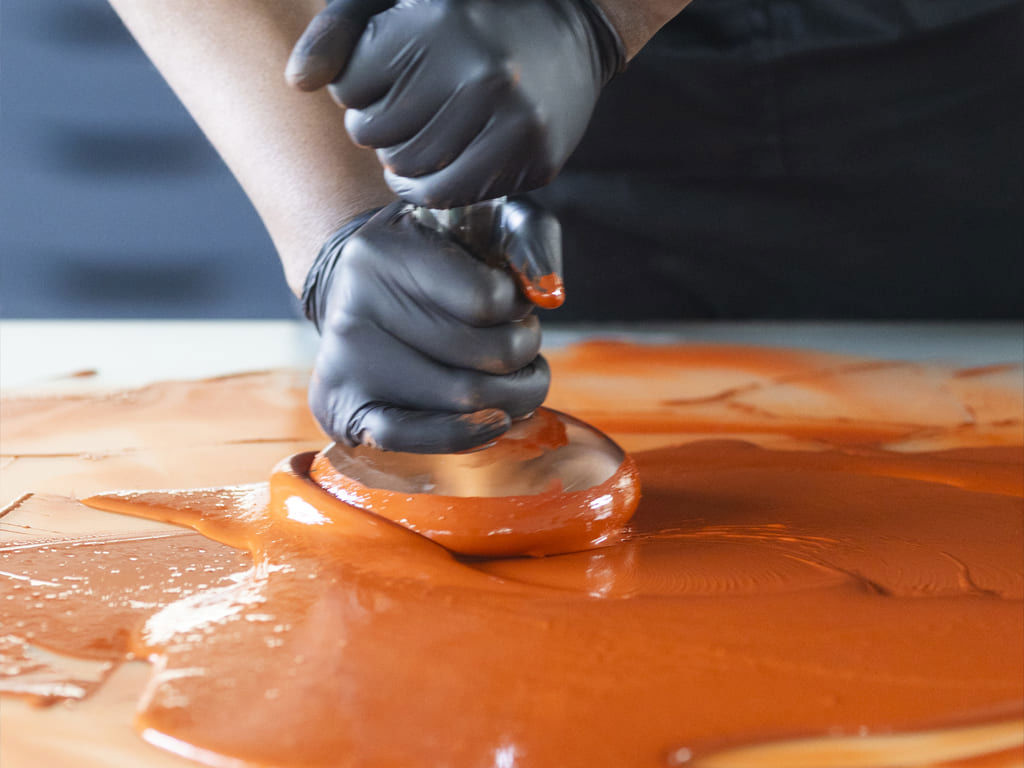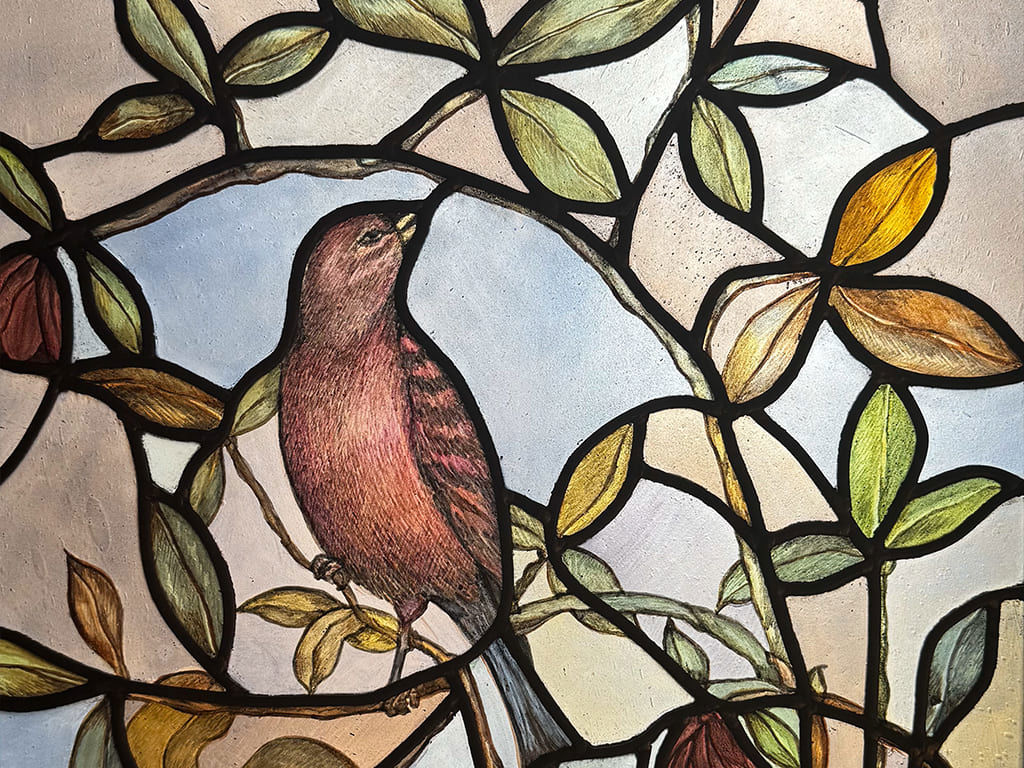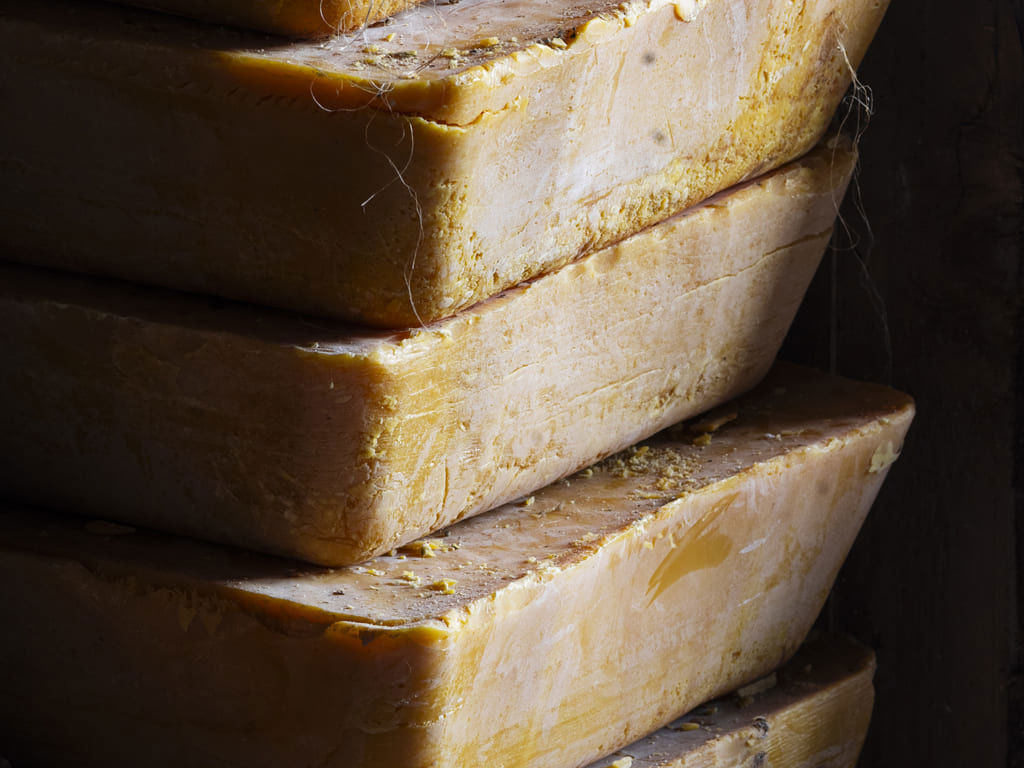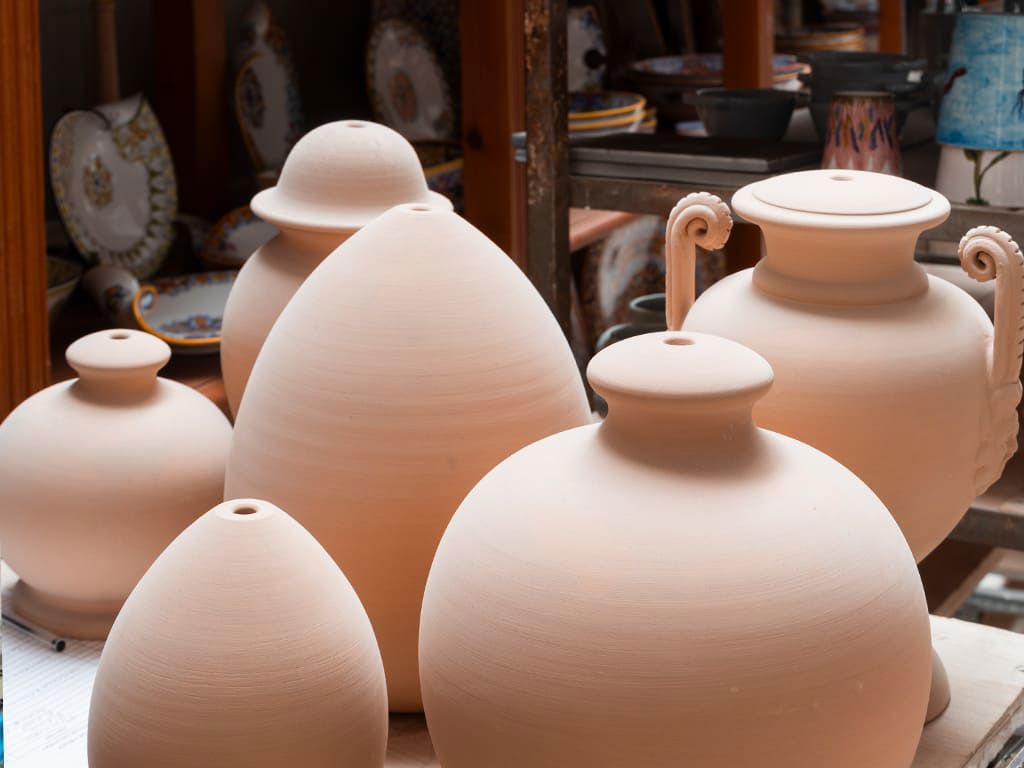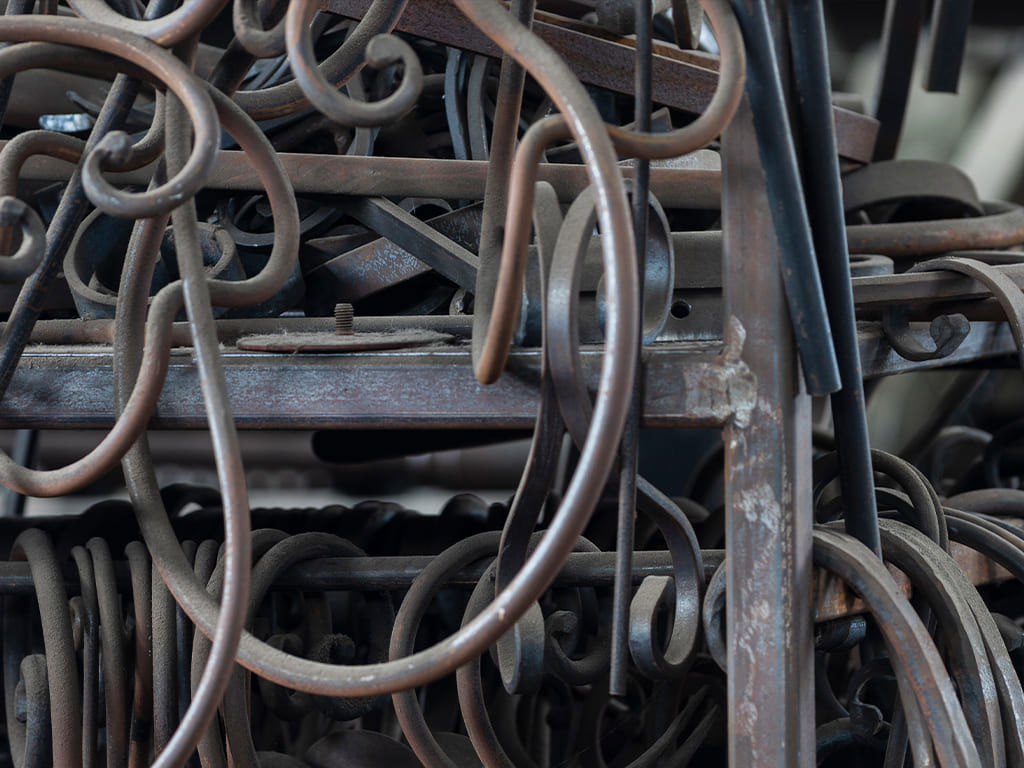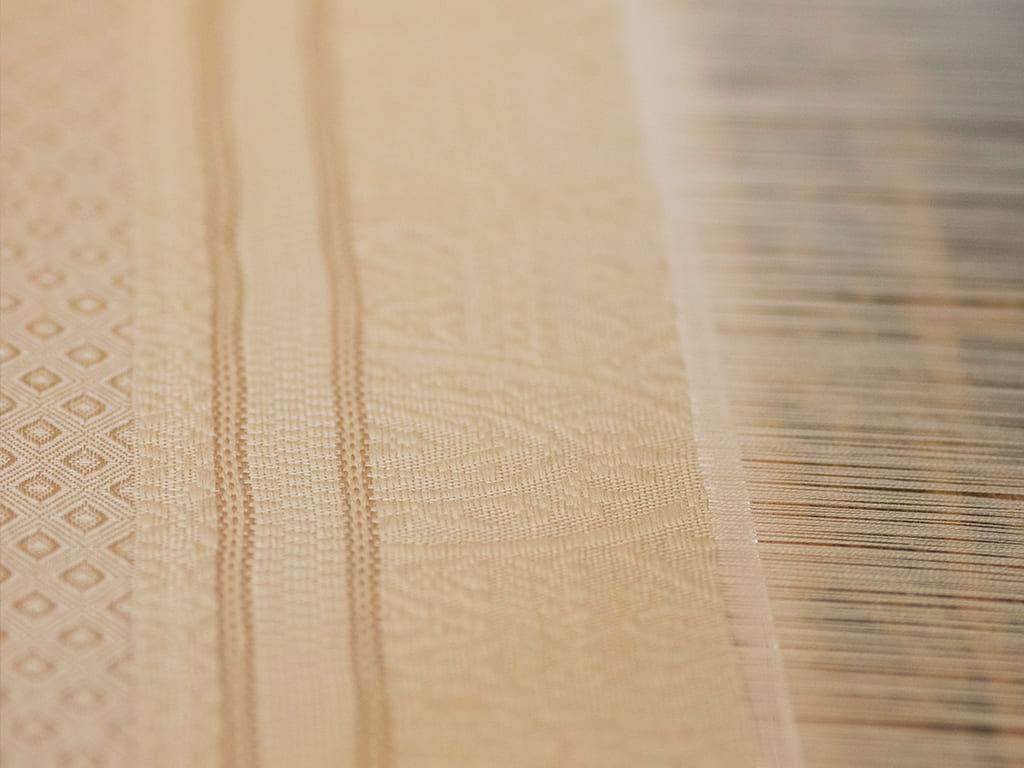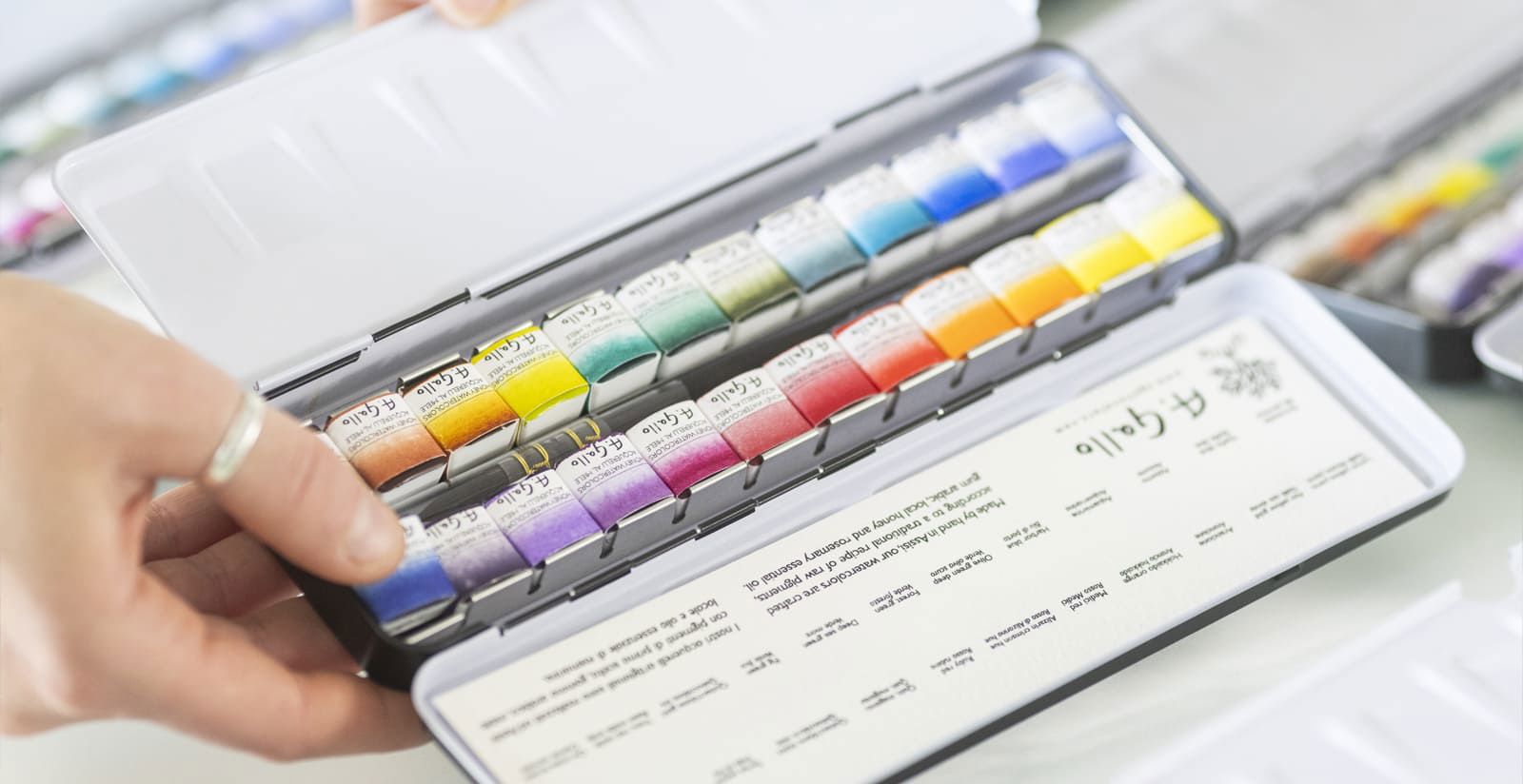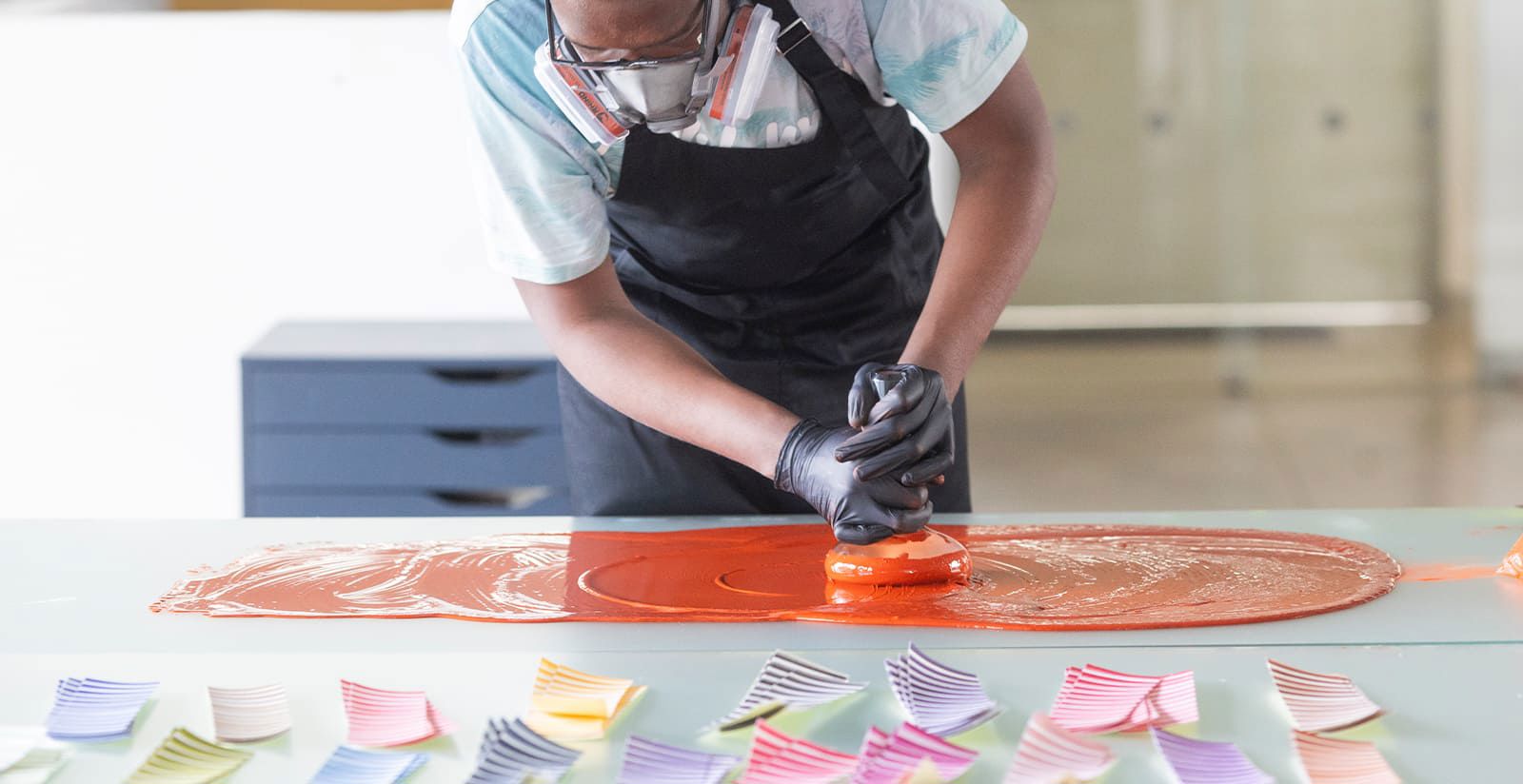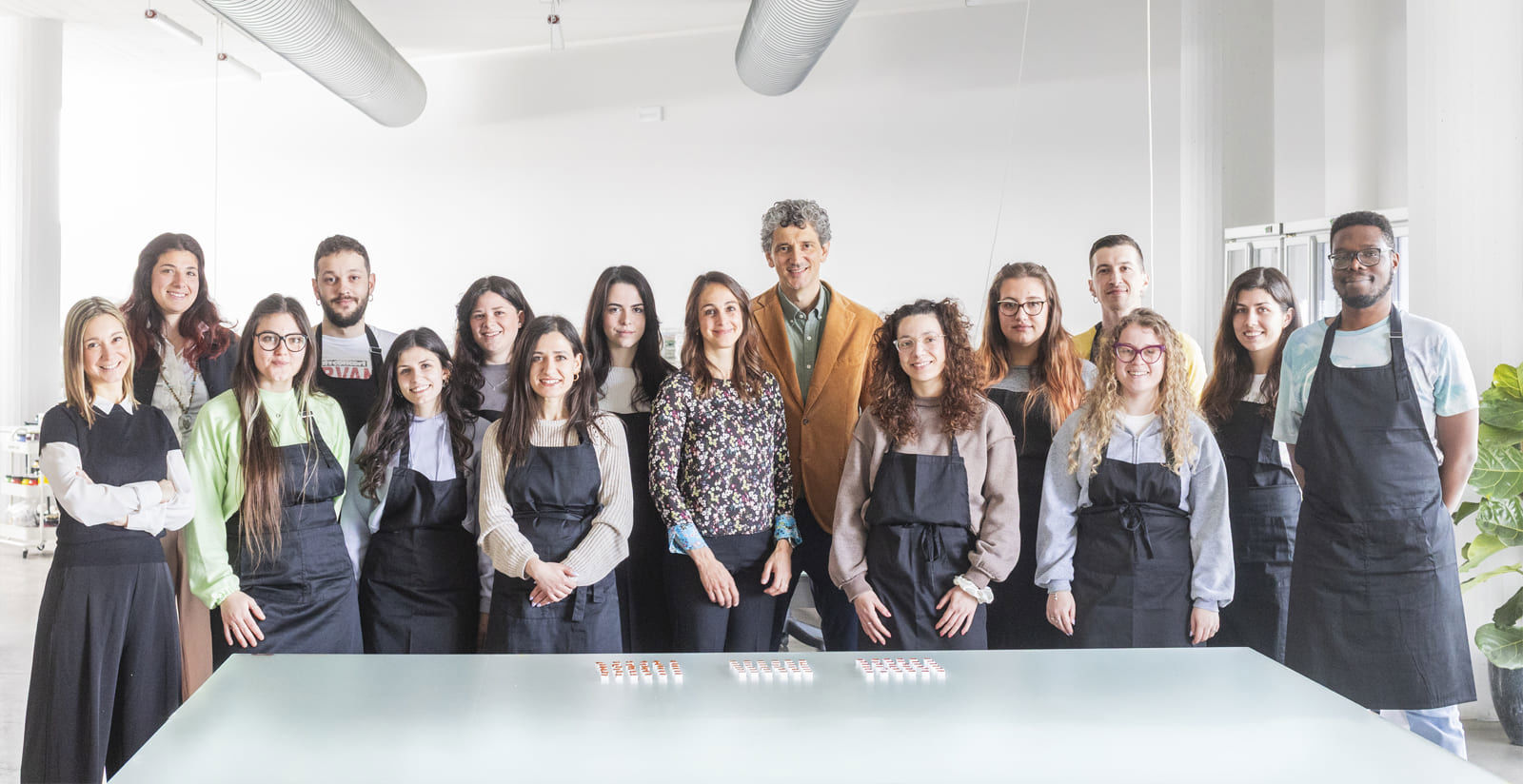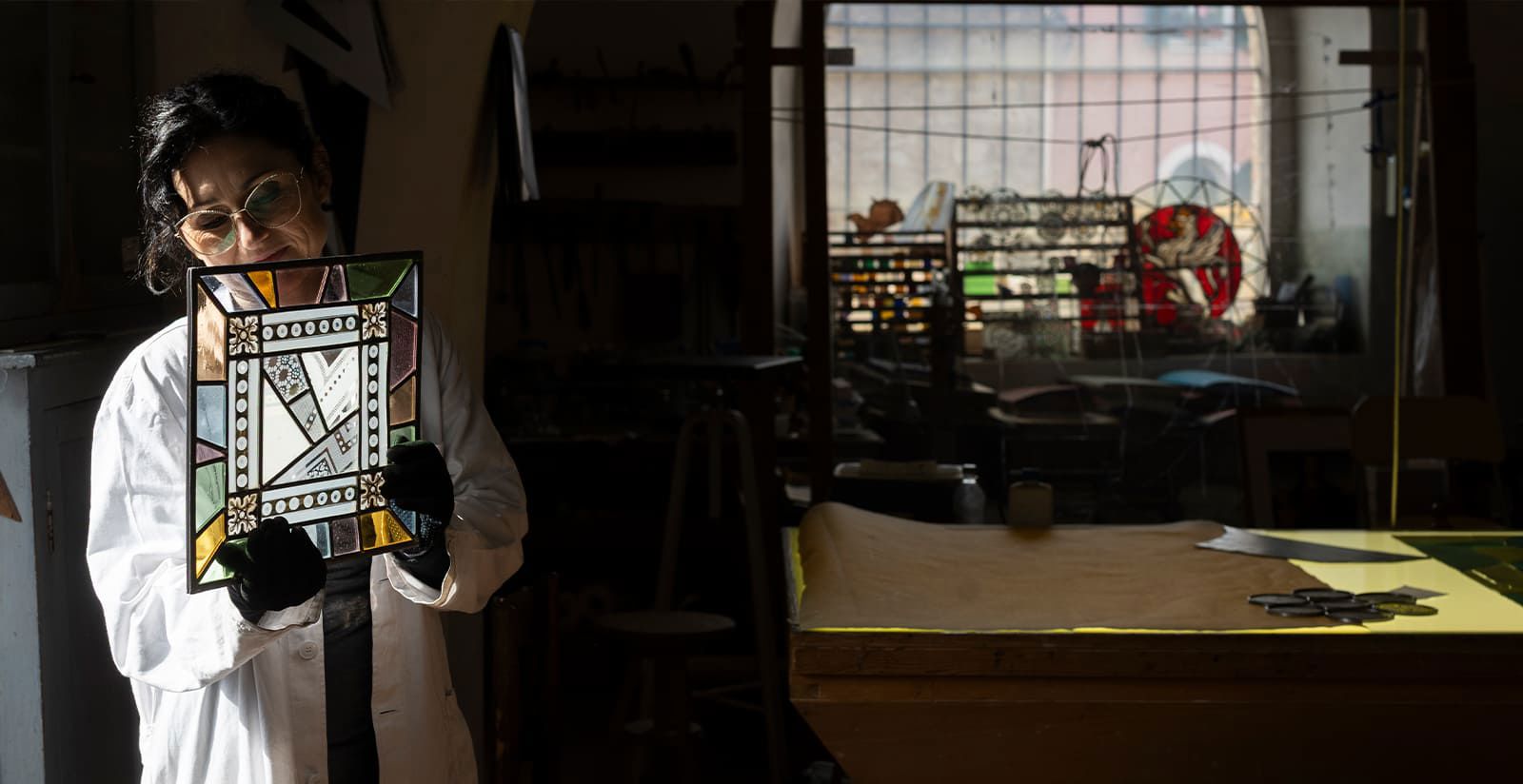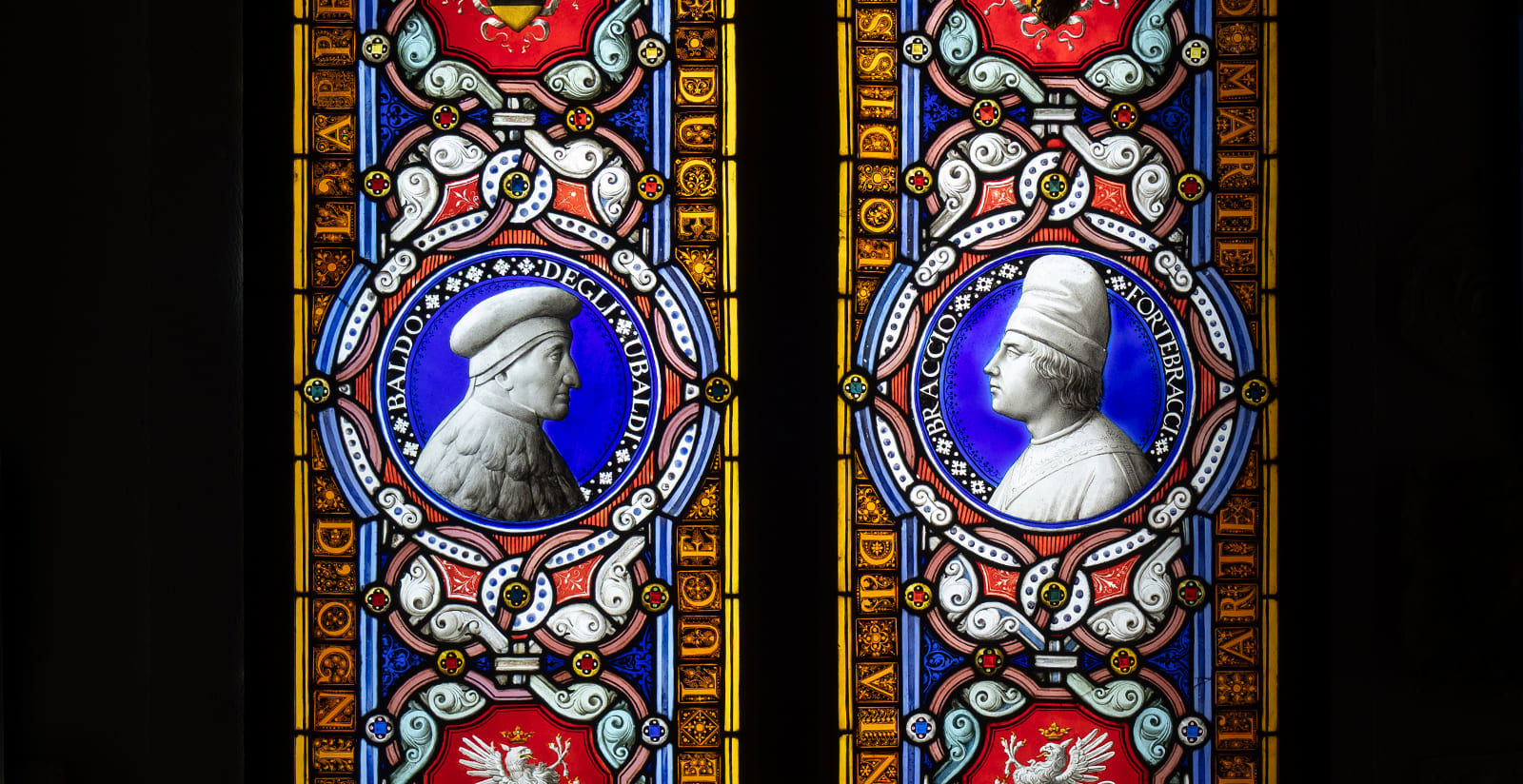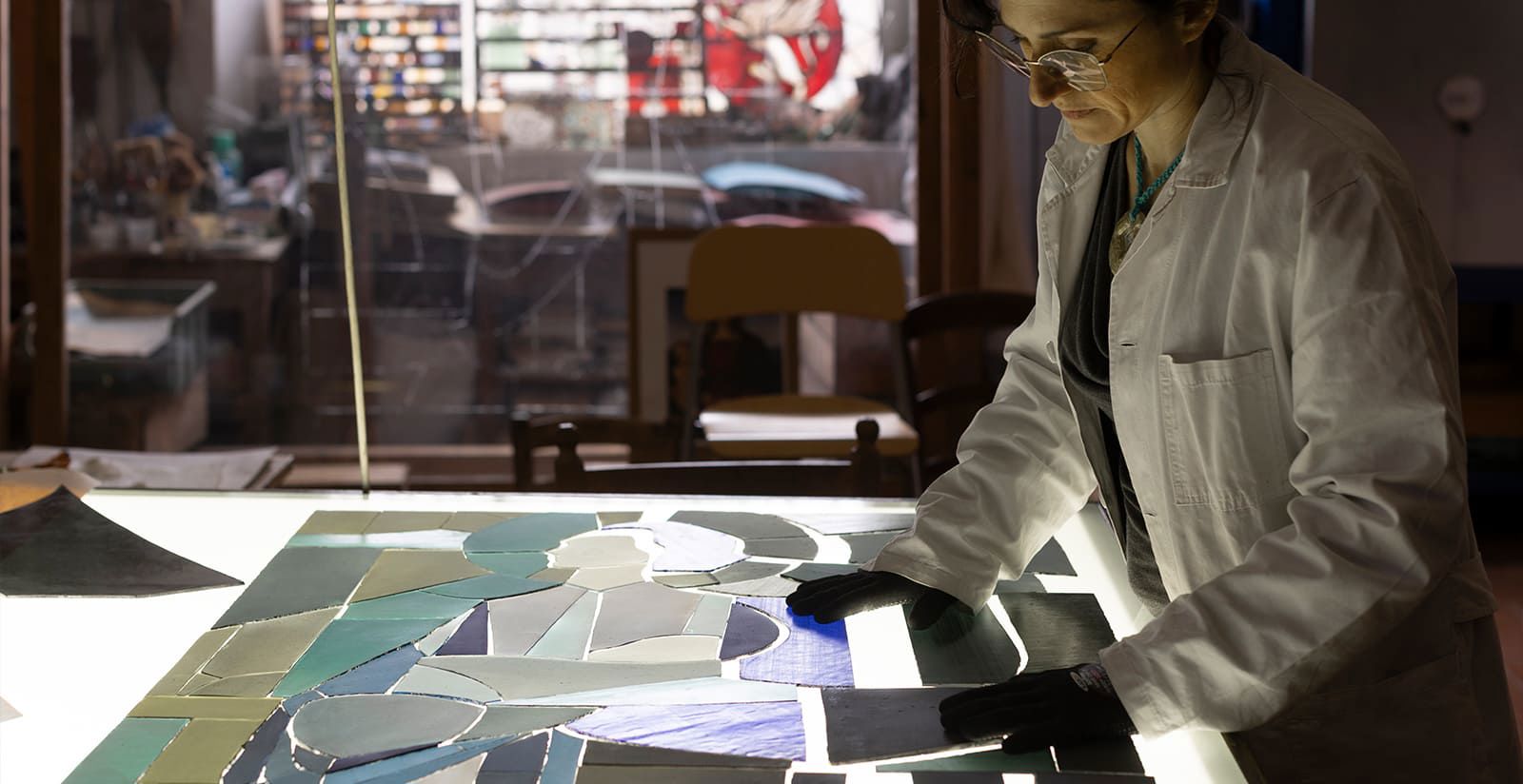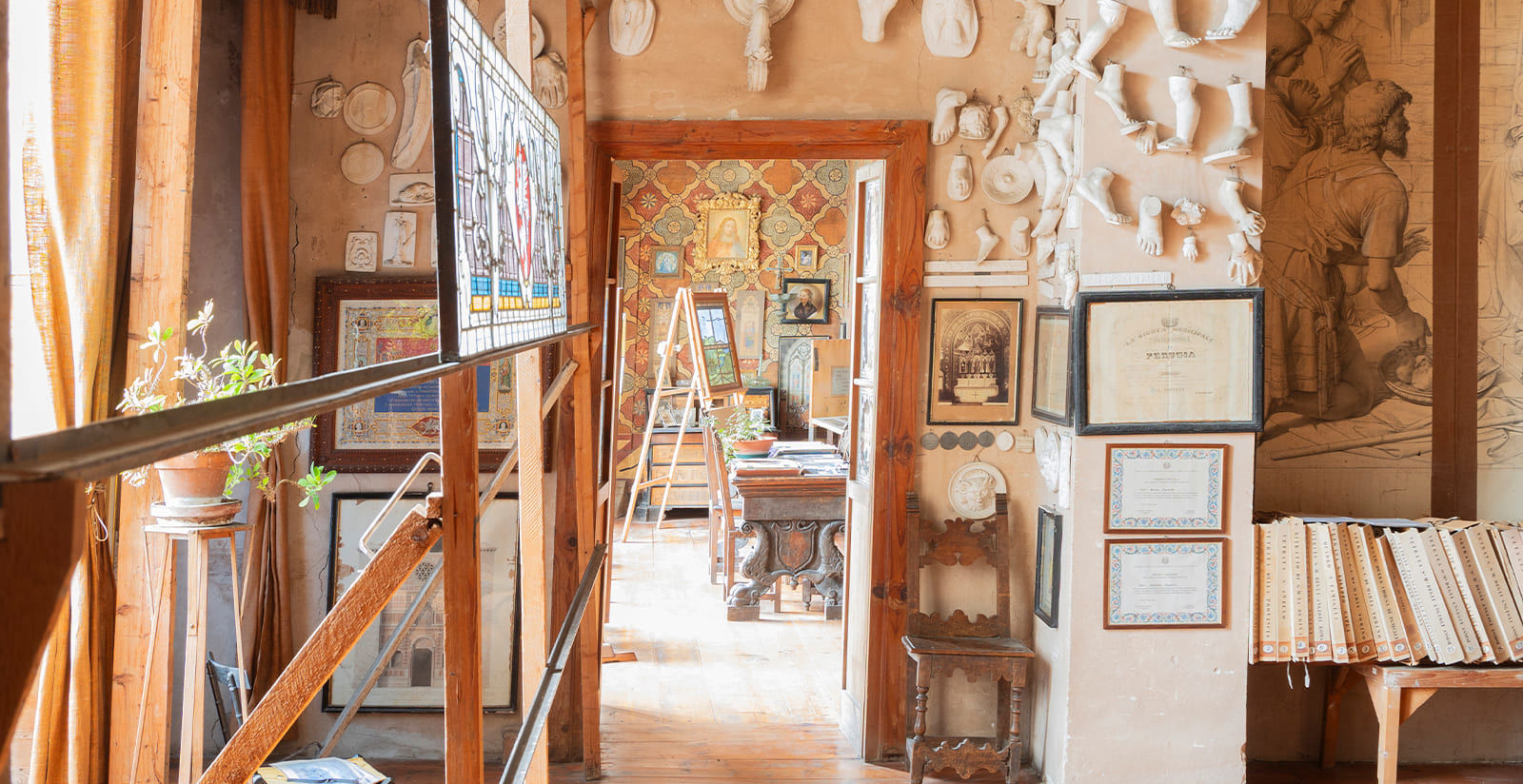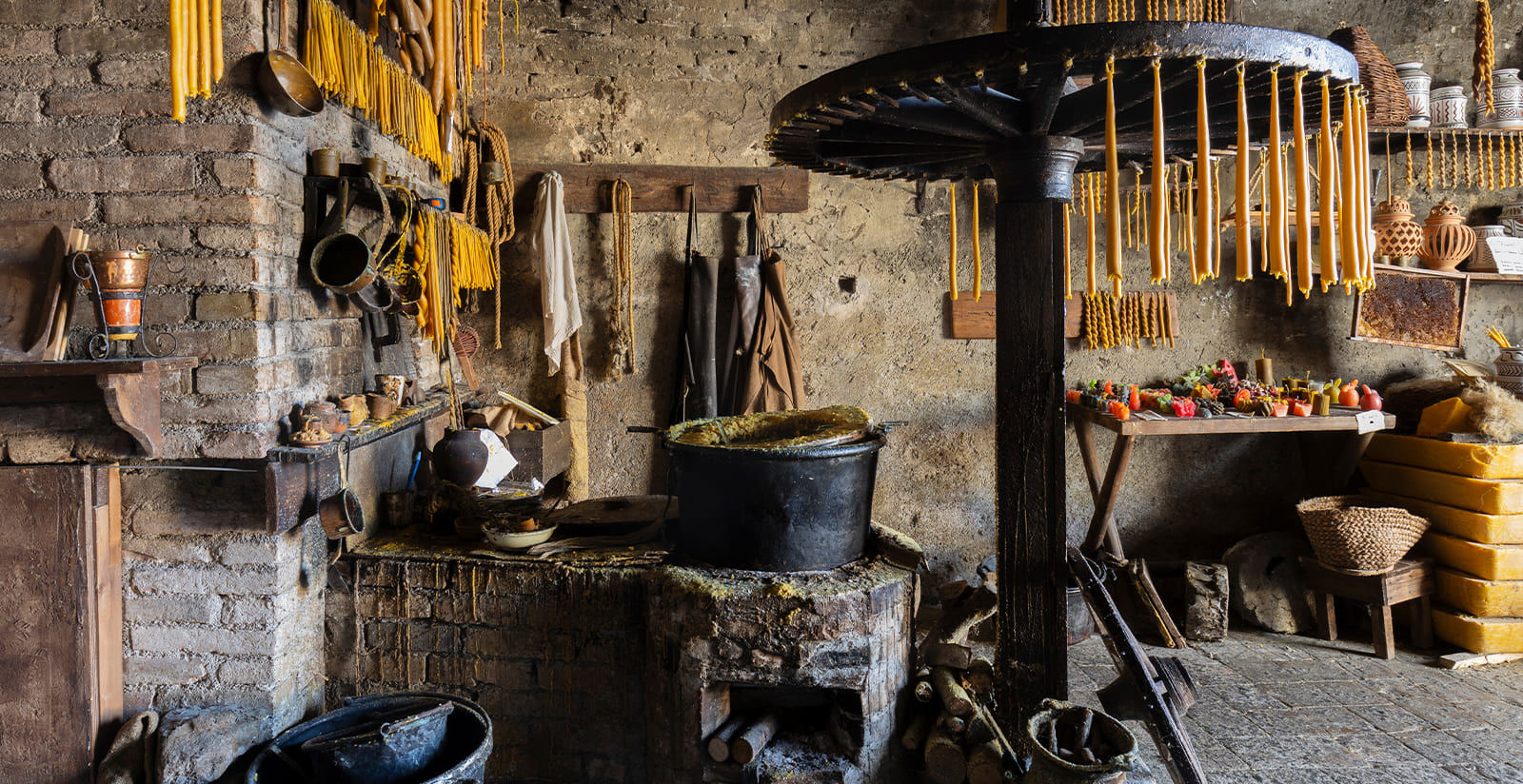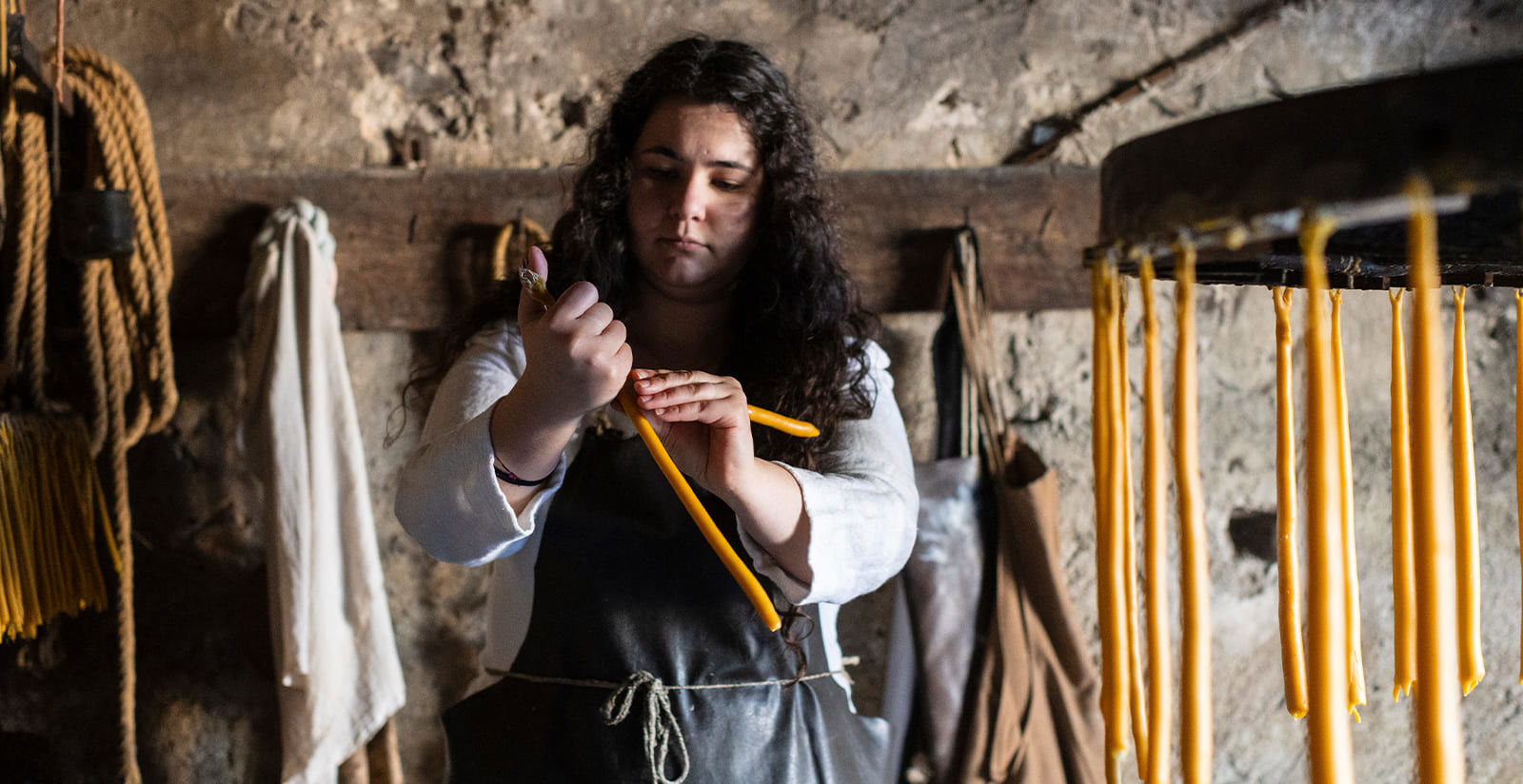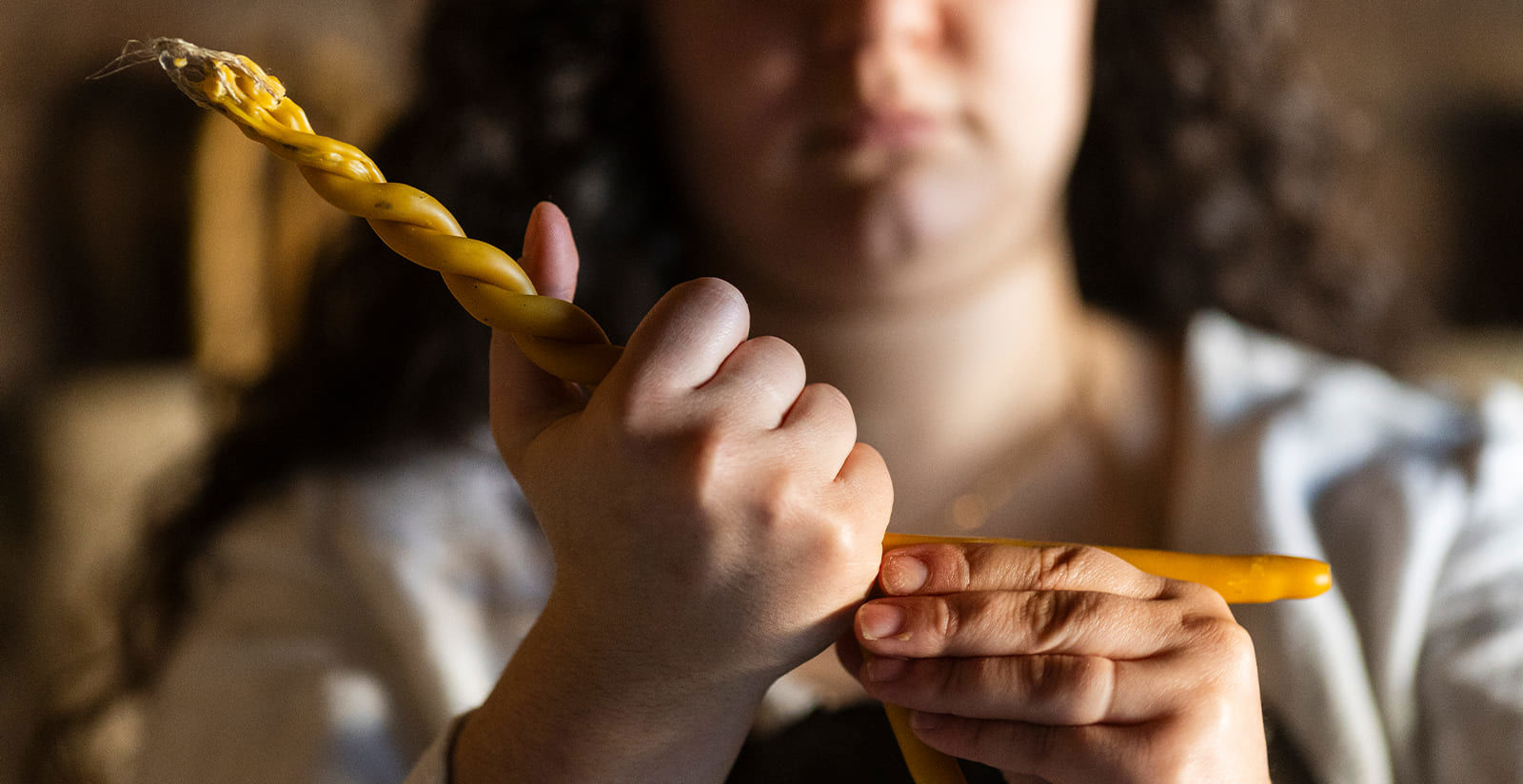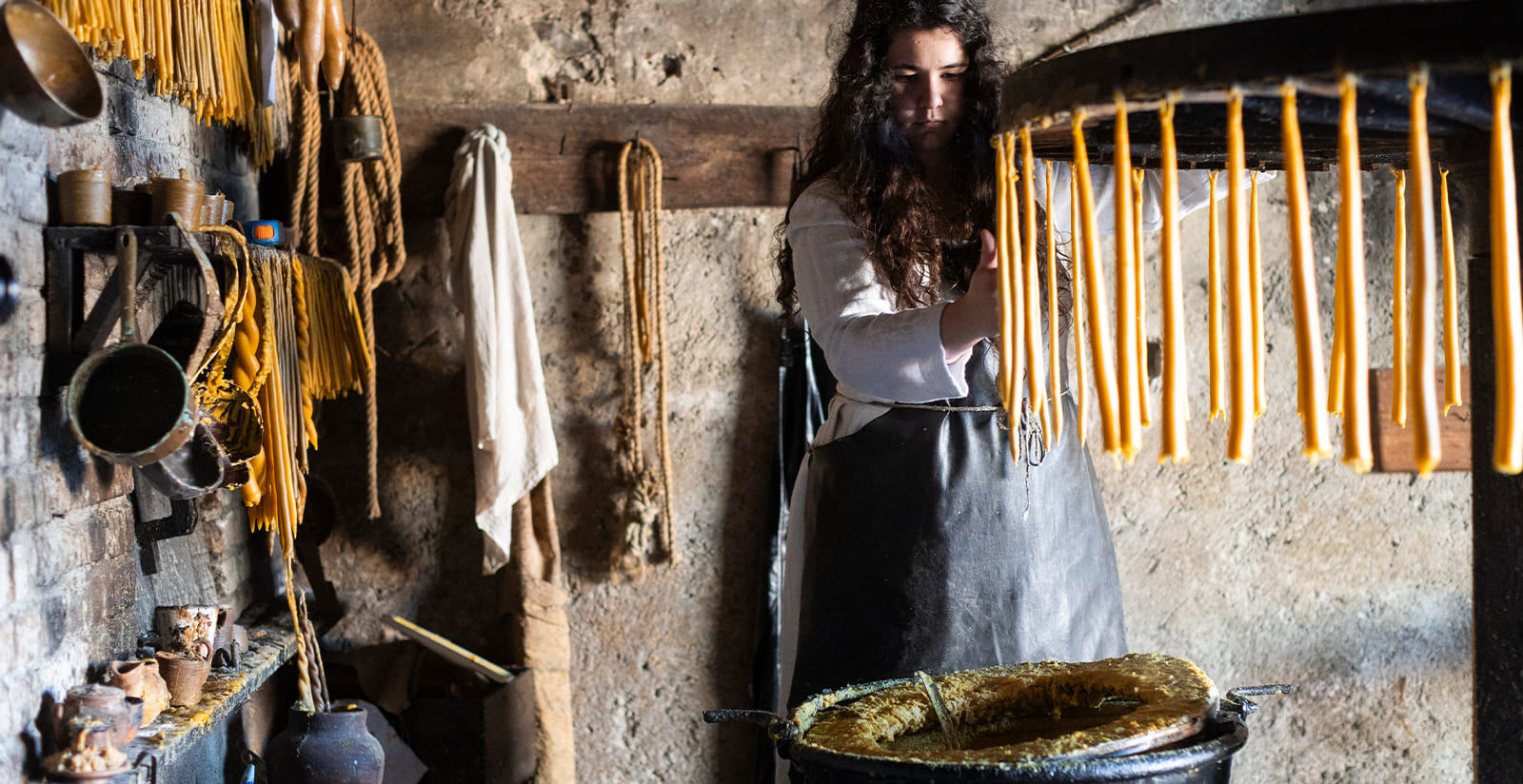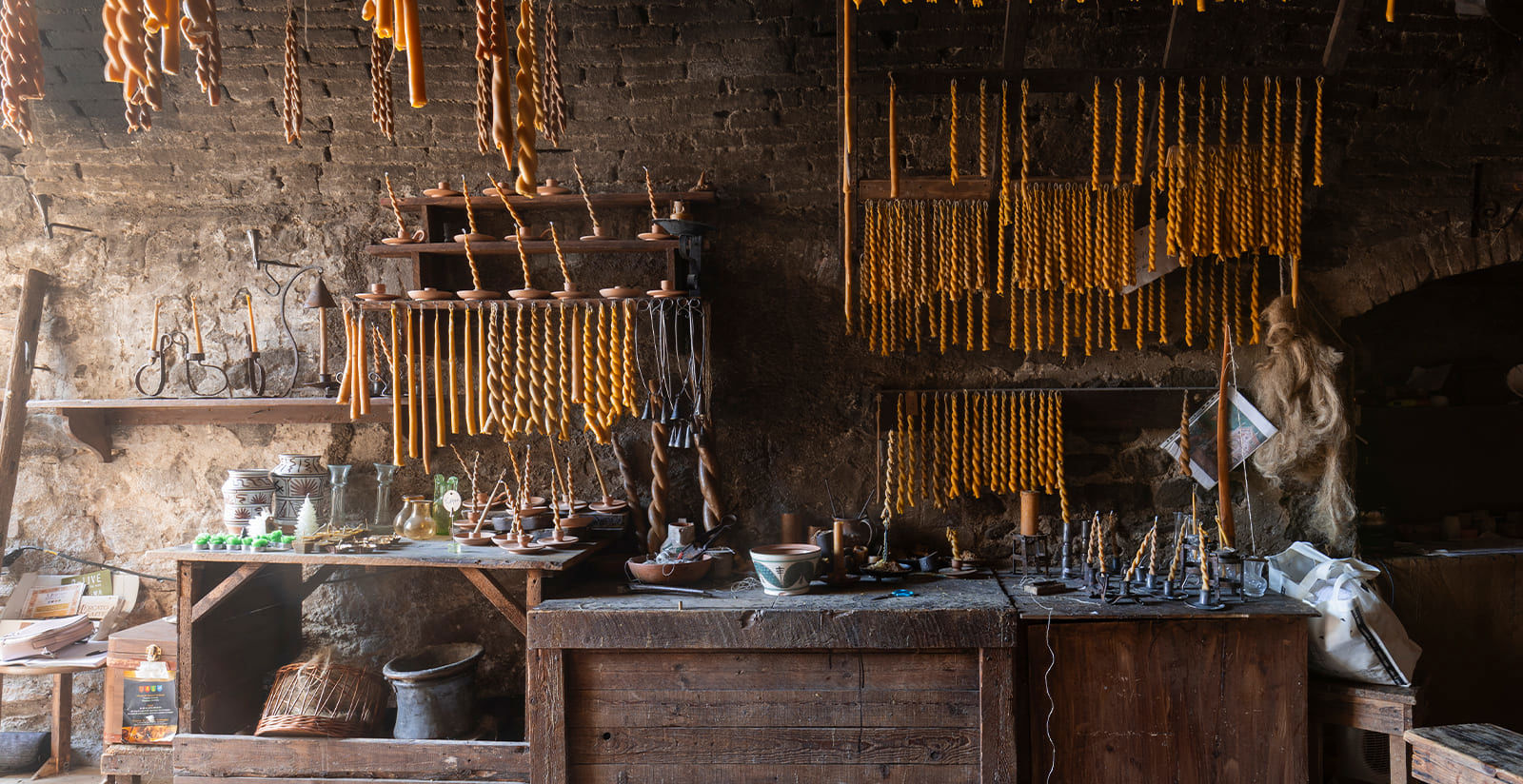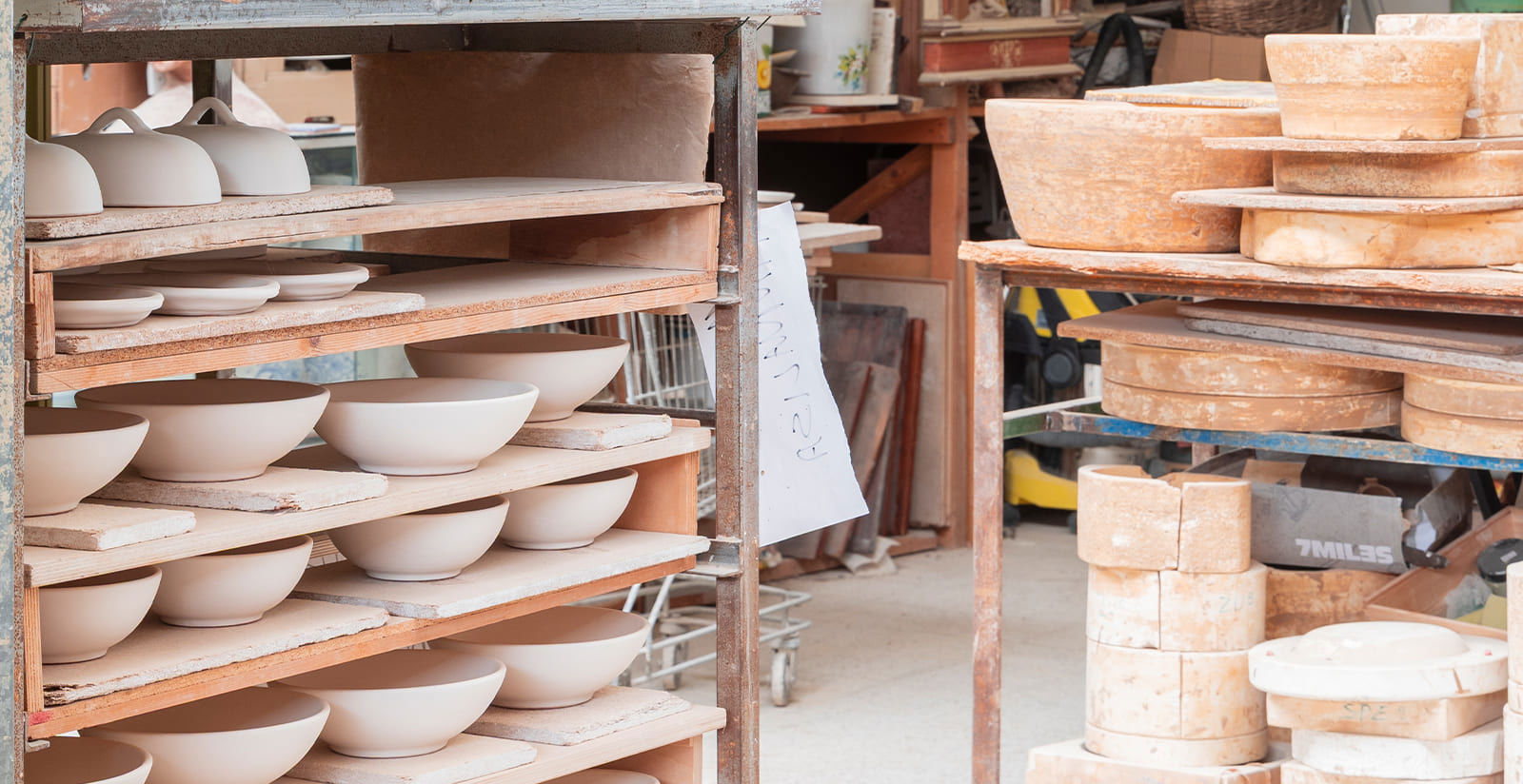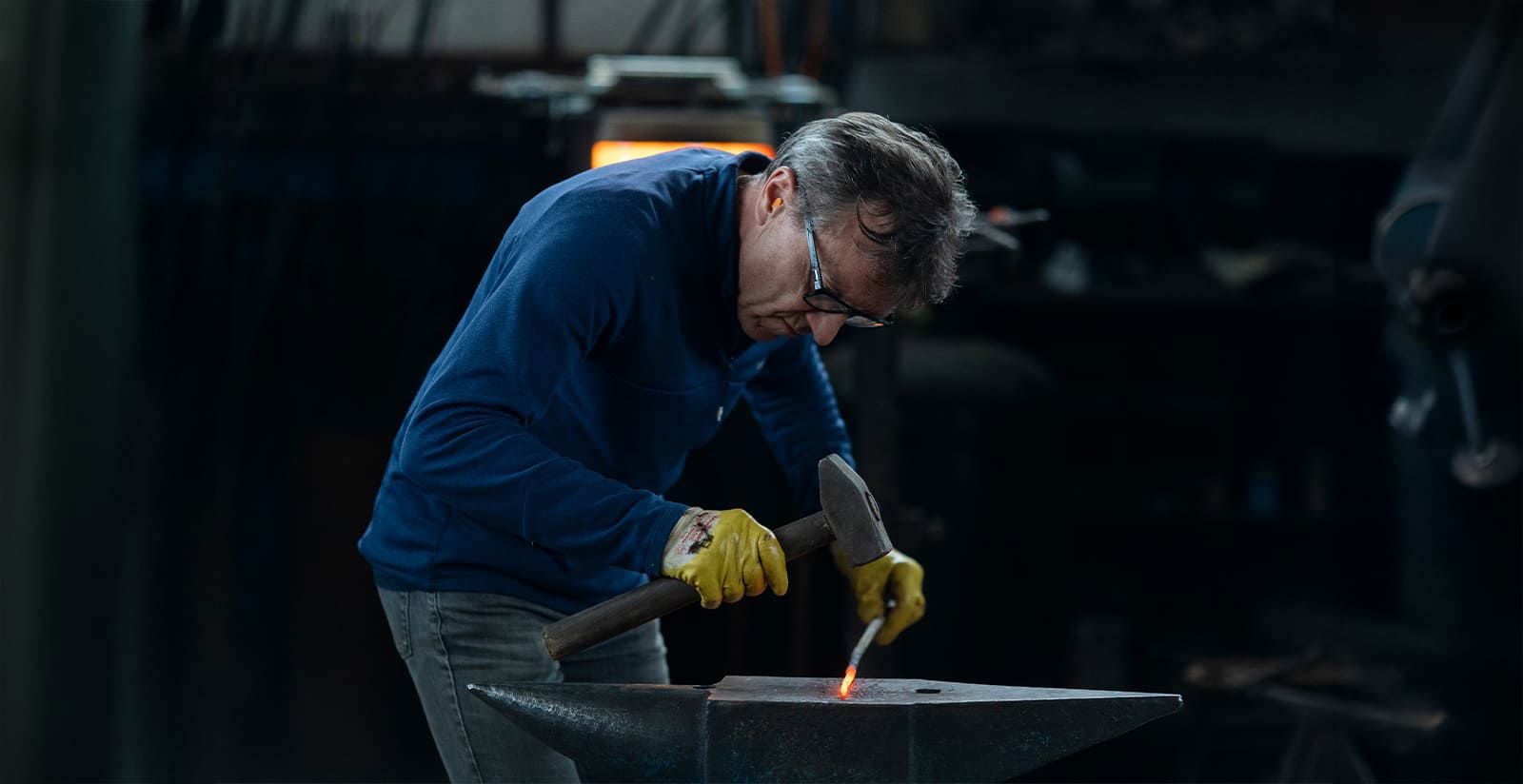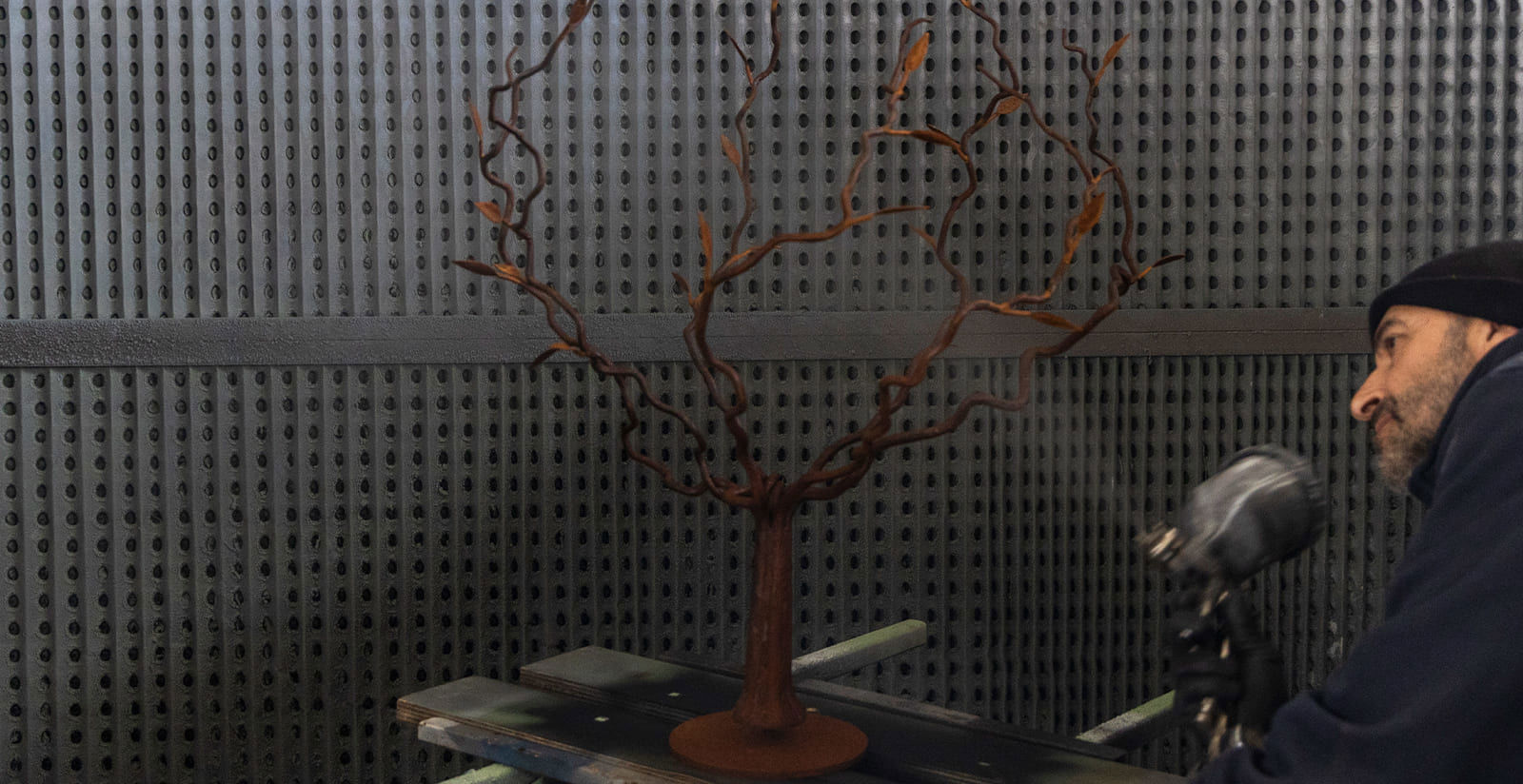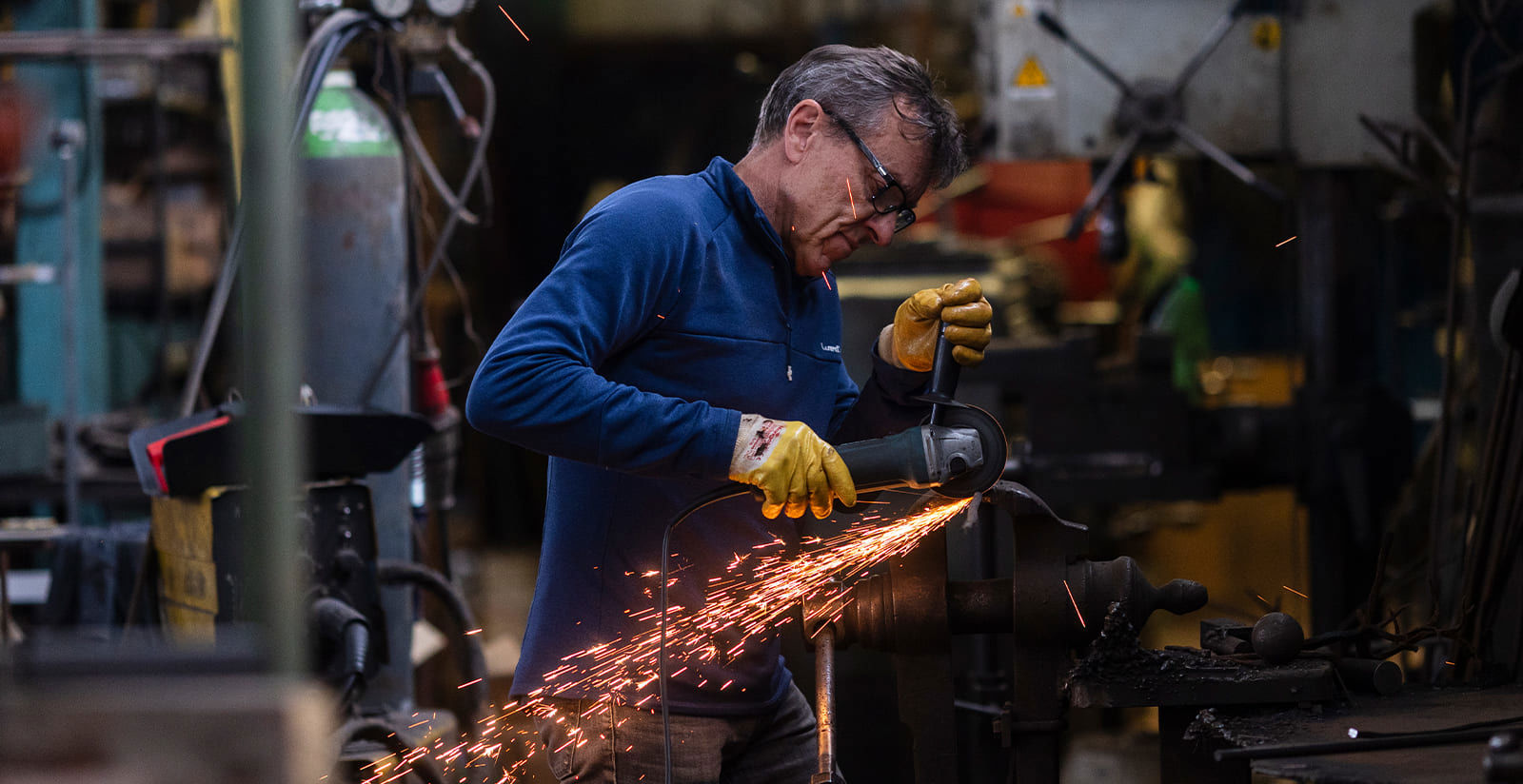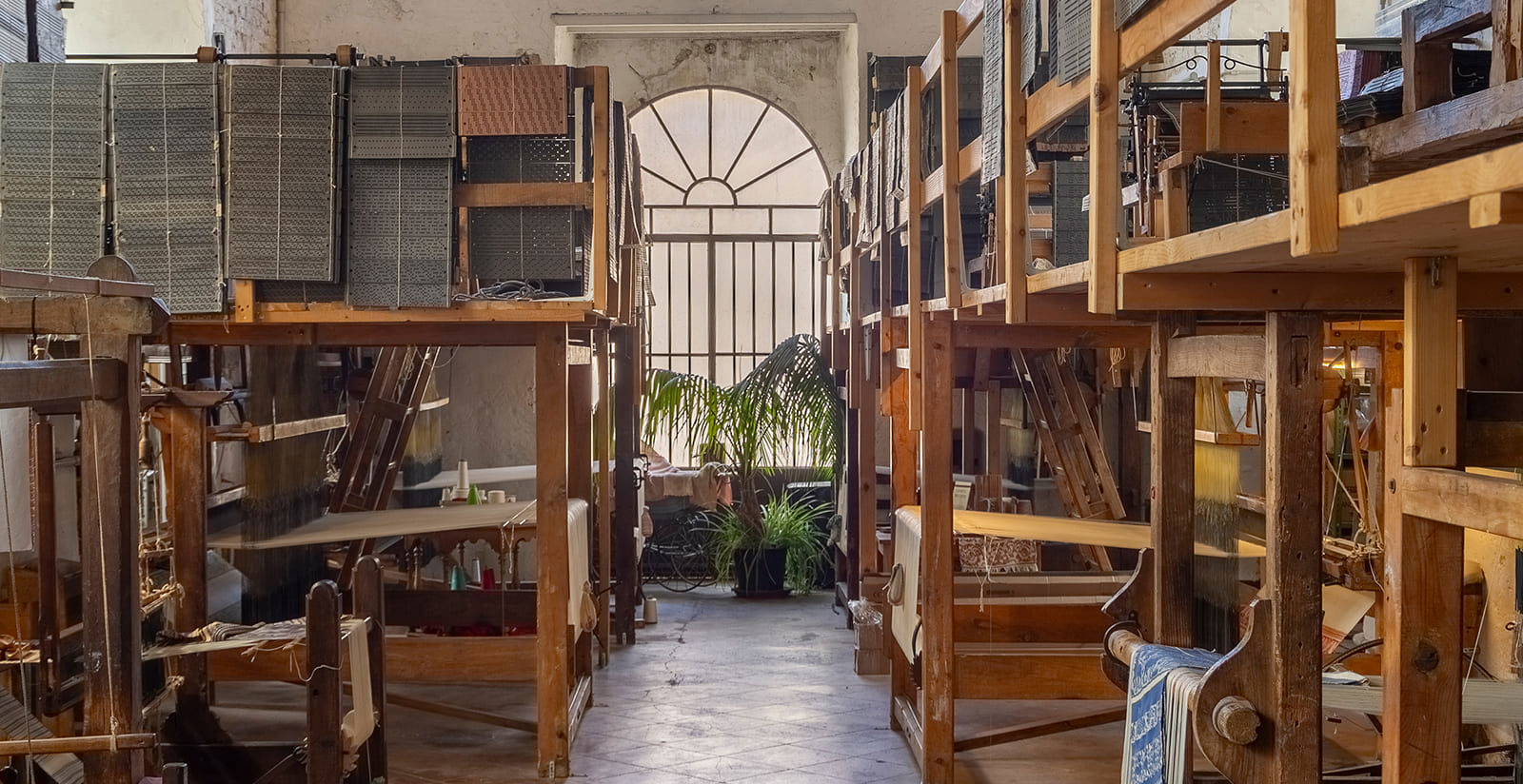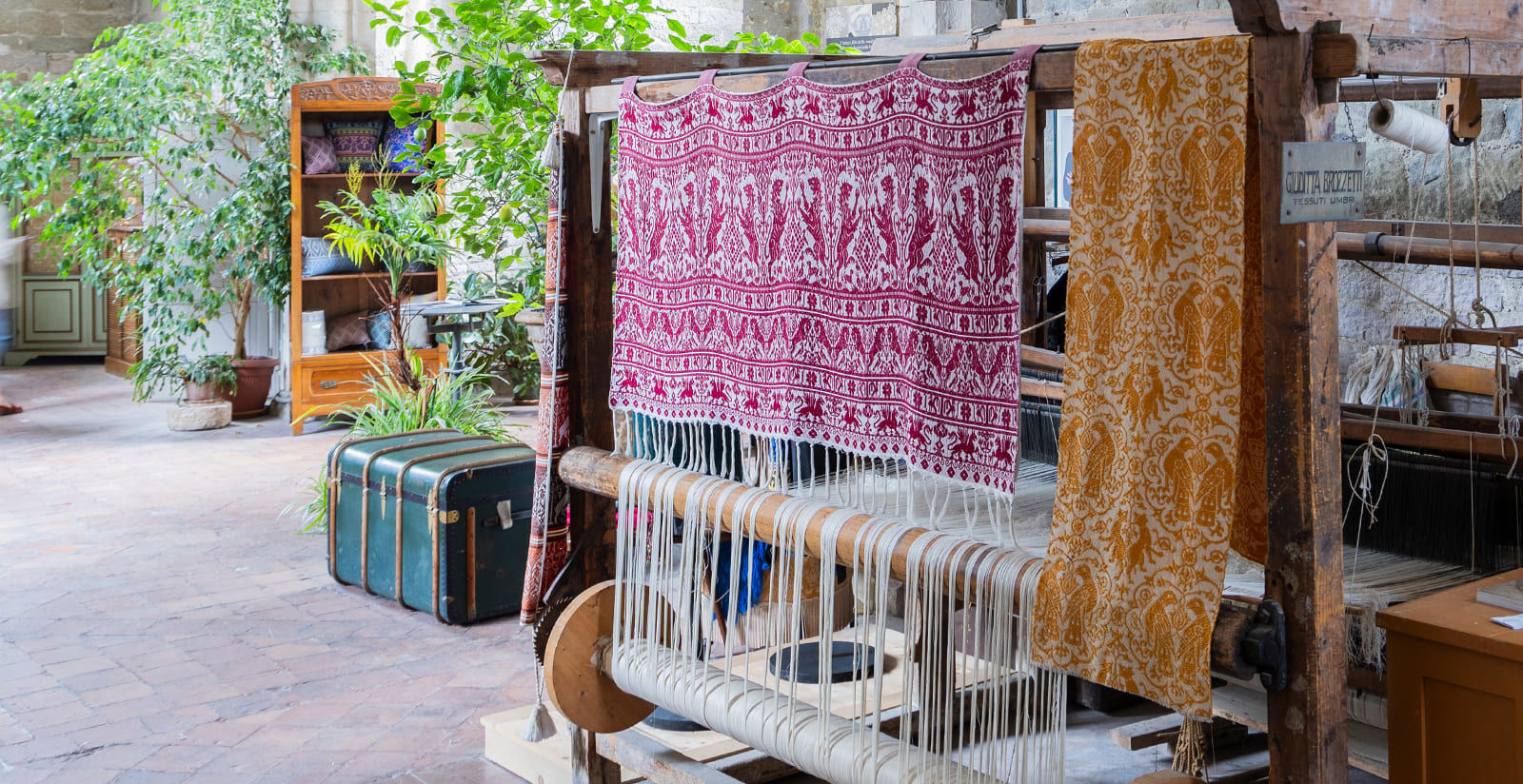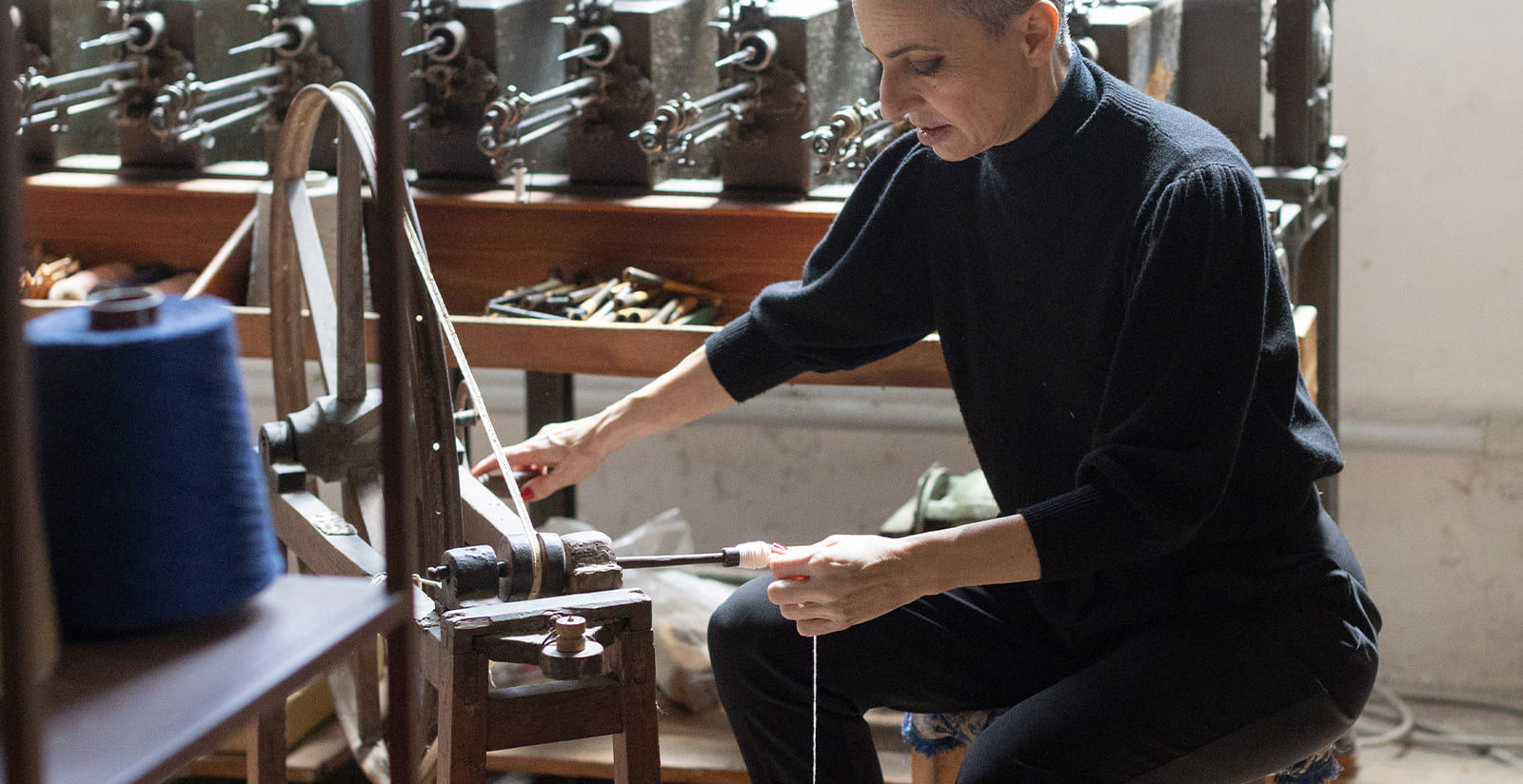Umbria
Wonders in Umbria.
Crafted wisdom, told by hand.
The identity of a place is preserved in the ancient gestures and its timeless crafts. Umbria, shaped by extraordinary civilizations, has left indelible marks of its rich past.
The Place of Wonders Foundation, together with Borgo dei Conti Resort, guides its guests to discover the artisanal heritage of Umbria and the unique stories that each bottega preserves.
The contribution from each experience with our Wonders supports the foundation’s scholarships program, dedicated to young talents wishing to learn and preserve the artisanal traditions of Umbria.
Watercolors
In the heart of Umbria, a vibrant workshop animated by the talented hands of young artisans shapes colors infused with soul and tradition.
A.Gallo’s watercolors are crafted from an ancient recipe: pure pigments, gum arabic, Umbrian honey, and essential rosemary oil. Each godet is hand-poured, reflecting the patience and skill of young craftsmen, guardians of ancient knowledge.
These handmade wotercolors are born from the fusion of Italian painting and Persian calligraphy, a culmination of Alina Gallo's studies. Together with Giuliano Matteucci, she founded this studio where art is passed down, reinvented, and becomes a daily gesture.
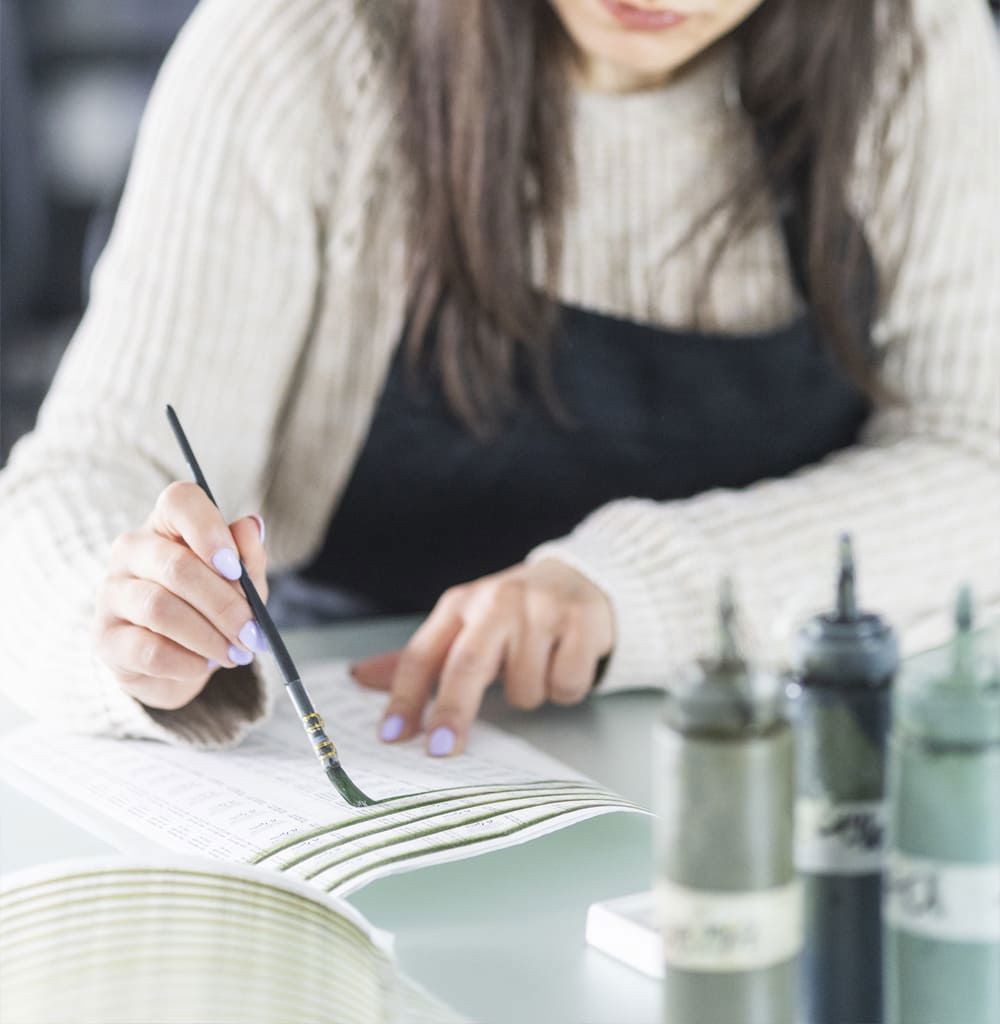
Each color is a fragment of history made contemporary, sustainable, and free from heavy metals, for an art that respects nature and celebrates the beauty of handmade.
Glass
Painting a stained glass window melds light and color into a living artwork that shifts throughout the day.
Francesco Moretti developed a unique technique where each piece of glass was delicately painted to achieve chromatic harmony. The process begins with sketches and drafts, followed by full-scale drawings, glass cutting, painting with powdered pigments, multiple firings, and finally, leading with lead.
For Moretti, stained glass is a major art form as glass offers as much expressive freedom as wood, marble, or canvas. The Moretti Caselli Studio has continued this tradition since 1860, with five generations of artists.
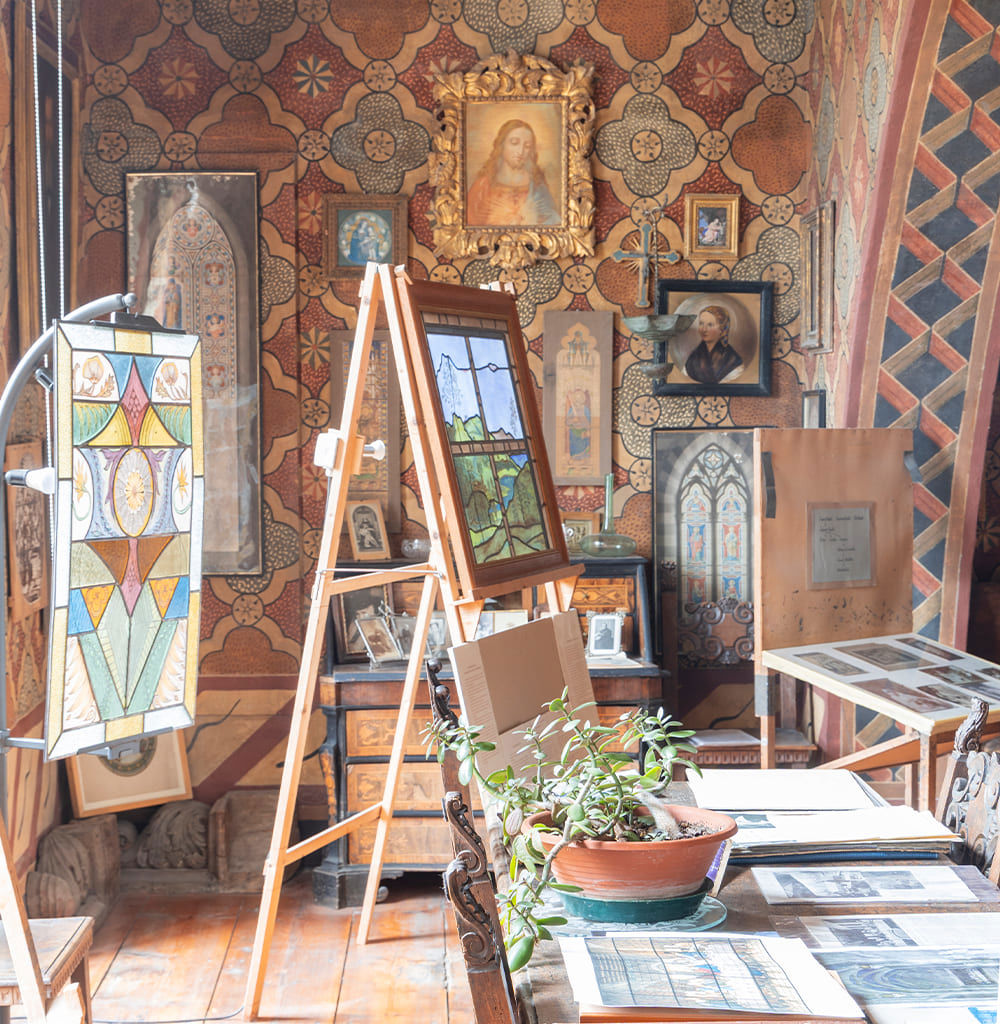
Today, Maddalena Forenza passionately carries on this legacy, creating works that can be seen in and around Perugia.
Beeswax
A flame melts pure beeswax. Hemp wicks wait, steady and silent. A medieval wheel turns, slowly, patiently. This is how the Duplero is born—pour after pour, gesture after gesture.
Candle making is an ancient art, its roots tracing back to Egypt. A fresco by Giotto in Assisi unveiled the twisted form of 13th-century candles, allowing a long-forgotten technique to emerge from the shadows of time. By binding two candles in a single embrace, the ceraiolo shaped the Duplero—a double flame, created to bring more light into the world.
In Bevagna, a jewel of Umbria shaped by centuries of history, the Cereria Medioevale has found its natural home. Here, through the continuity of hand and tradition, ancient crafts are are lived.
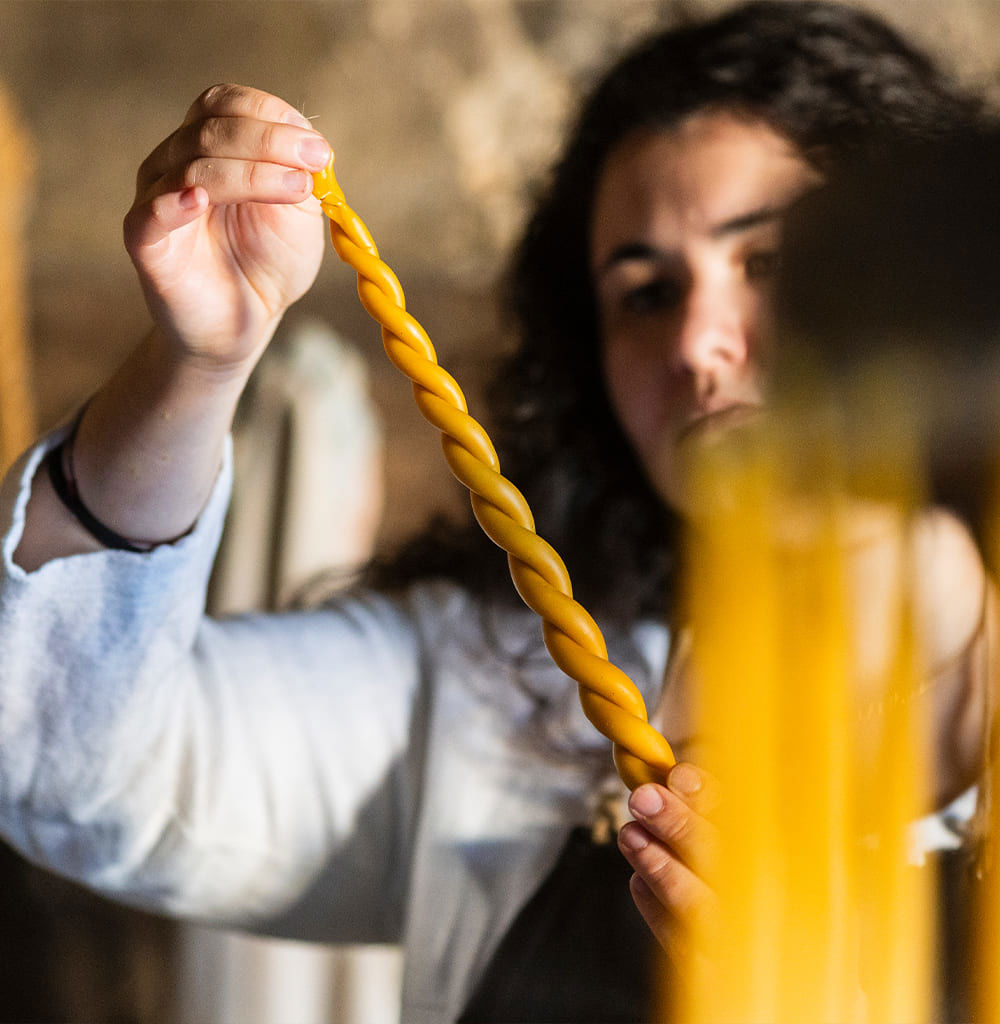
Step inside with the scent of honey, chamomile, and propolis. Along wooden beams and stone walls, rows of candles take form, luminous witnesses to a craft that still burns with the memory of the past.
Ceramic
Deruta, with its centuries-old soul and unrivaled craft, has long been a beating heart of Italian ceramic artistry.
Ceramiche Artistiche Gialletti Giulio is a family-run atelier founded in 1959 that carries this legacy forward with passion and precision, day after day. From the very beginning, the Gialletti family has embraced the elegance of Renaissance maiolica, then breathing new life into tradition through the hands of skilled artisans.
Every step happens under one roof: clay is shaped, fired, and hand-painted into pieces that are never the same—each one a small masterpiece of intention and detail. Rooted in history but never standing still, the workshop blends heritage with innovation, offering a vision of Deruta ceramics that feels both timeless and alive.
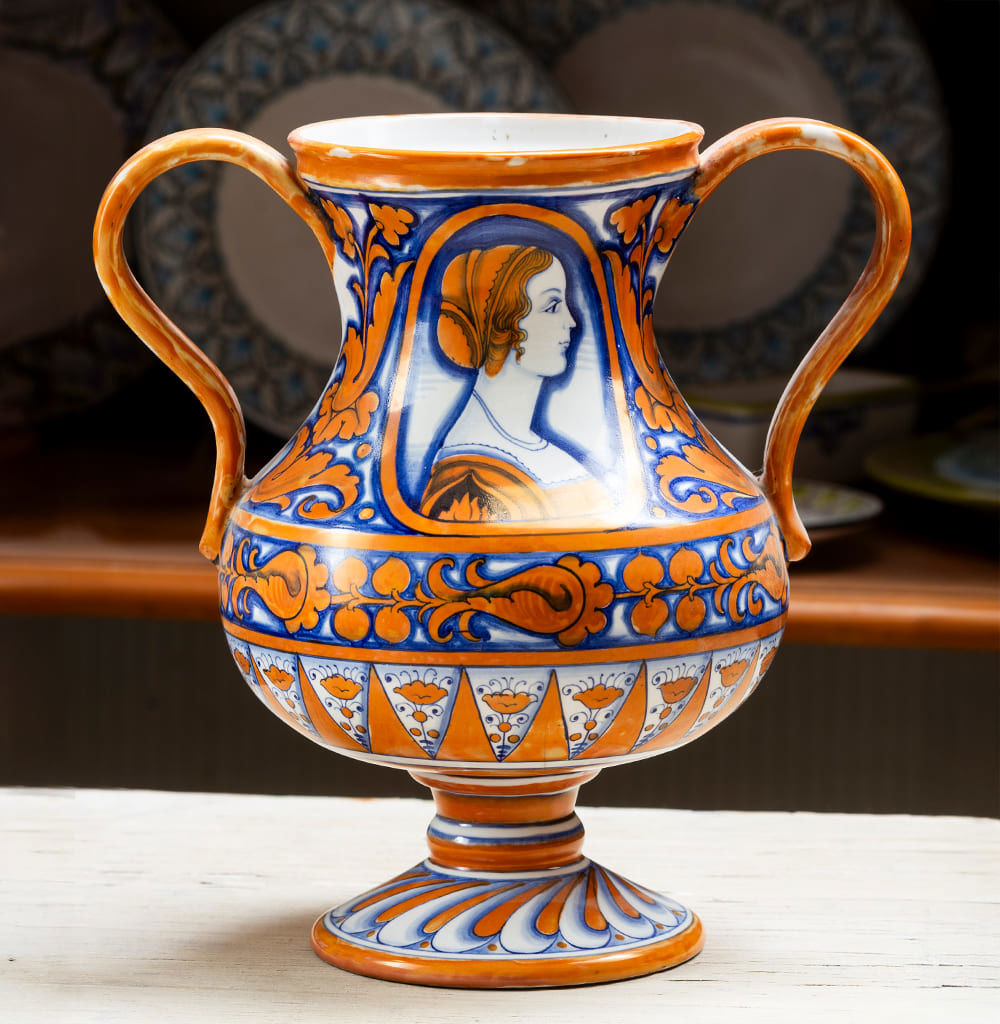
It’s more than craft—it’s a story of family, tradition, and beauty, written in color and carved in clay.
Iron
Rust is the living memory of iron, a quiet testimony to its passage through time.
A master craftsman for over 30 years, Luca Peppoloni carries forward a family legacy begun by his grandfather and continued by his father, transforming the inherited workshop into a space where artisanal skill meets a deeply personal artistic vision.
At his workshop L’Officina, he creates hand-forged iron pieces designed for both indoor and outdoor spaces. Each work is rooted in the land: stones from the Chiona Valley, flowers from Mount Subasio, and other natural elements enrich his creations, making them unique and full of meaning.
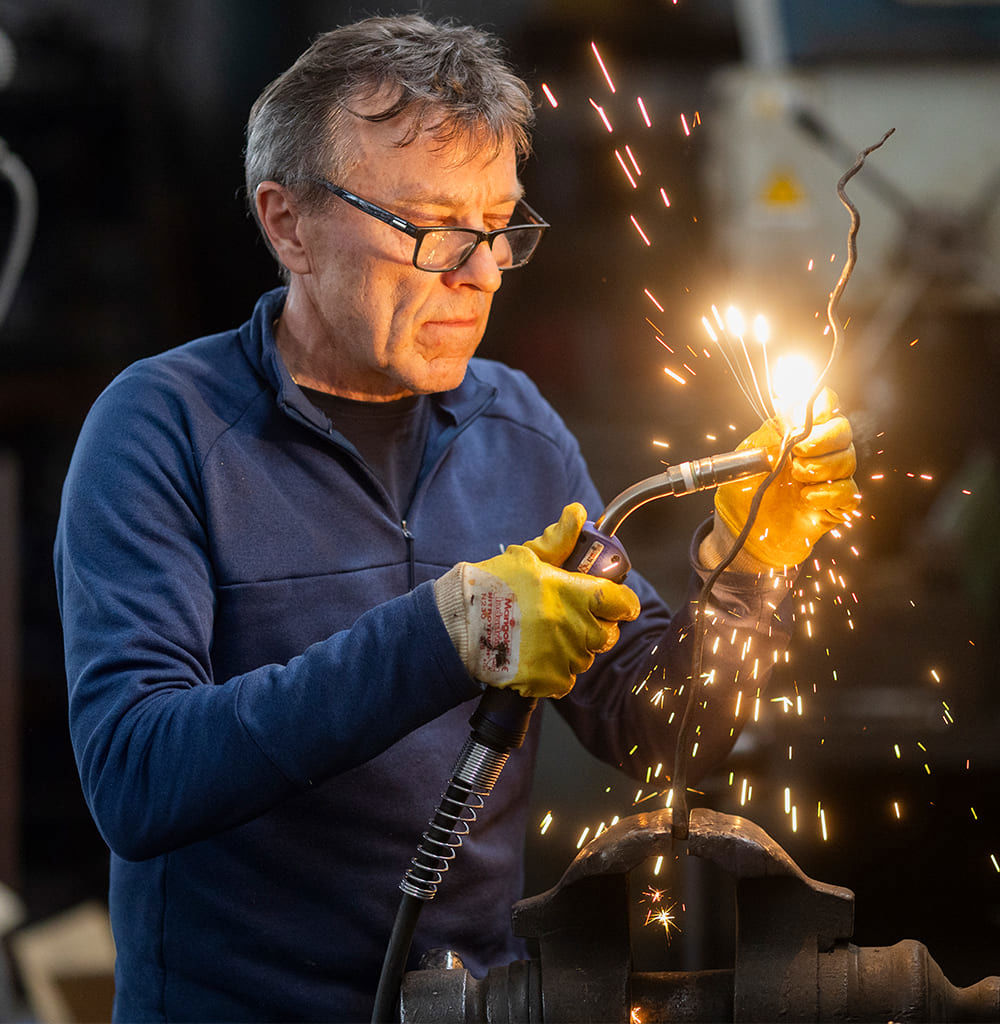
Time is at the heart of his art, elegant sculptures inspired by Etruscan tradition, evoking the quiet beauty of a distant past.
Textile
Umbrian textile heritage stretches back to the Middle Ages, when the renowned Tovaglie Perugine—intricately woven Perugian linens—were sought after across Europe and depicted in the paintings of Giotto, Leonardo da Vinci, and other great masters.
That centuries-old tradition endures at the Giuditta Brozzetti Museum-Atelier in Perugia. Established in 1921 by one of Italy’s early female entrepreneurs, the workshop has remained in the hands of the same family and the legacy has been carried by four generations of incredible women.
Today, Marta Cucchia, the great-granddaughter of the founder, runs the atelier from within the Church of San Francesco delle Donne, a striking historic site in the heart of the city. Original Jacquard looms from the late 1800s are still in daily use, allowing for a production pace that favours craftsmanship over speed—a rare ode to slowness and deliberate beauty.

In partnership with The Place of Wonders, the atelier is playing a vital role in safeguarding and passing on the know-how of hand-weaving to future generations.




